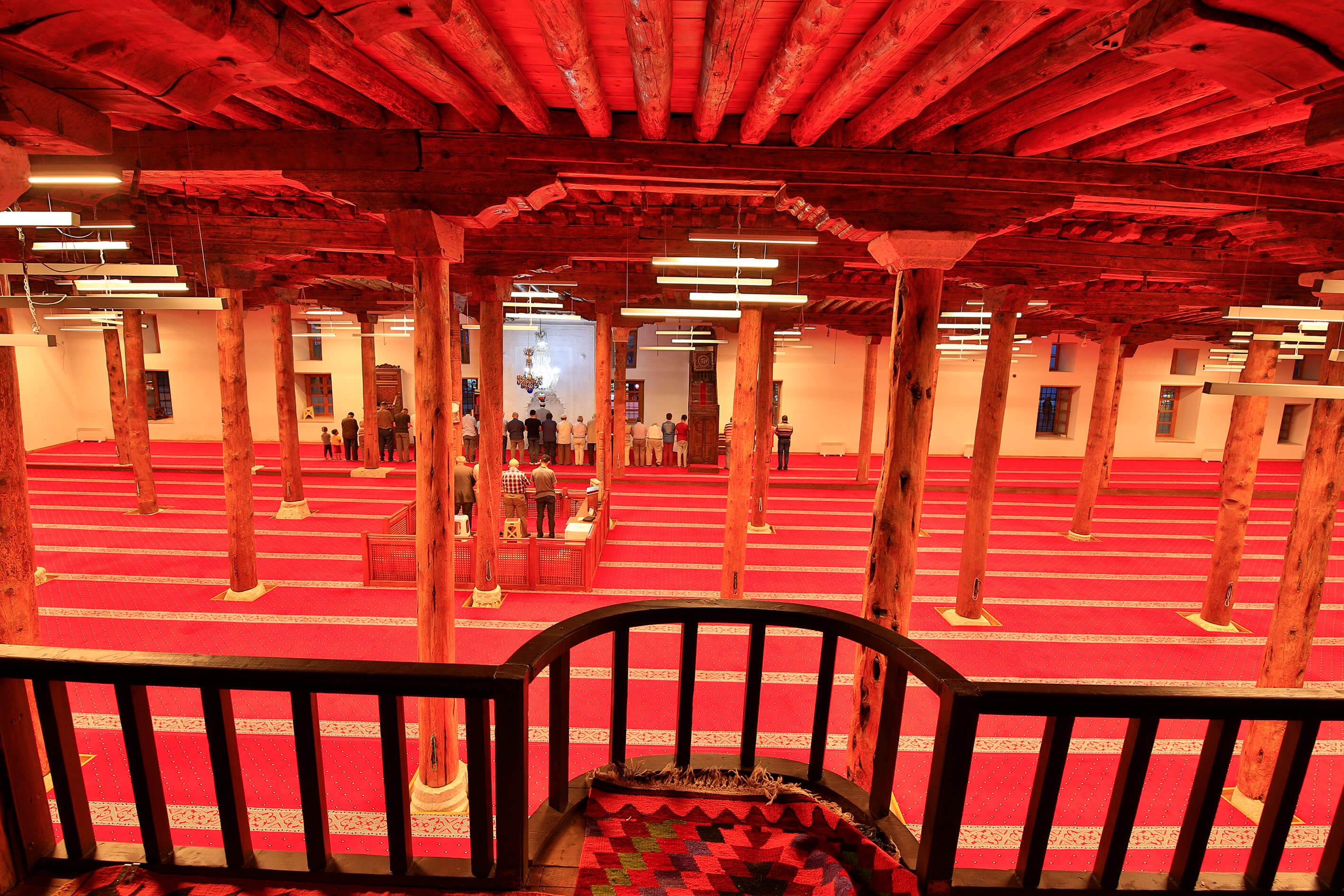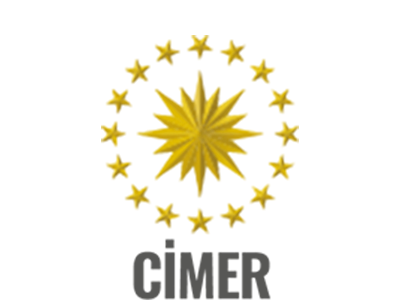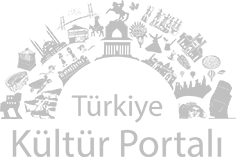The building was given its final shape by Mikail bin Abdullah (Emineddin Mikail), a follower of Mevlana Jalal ad-Din Rumi and a public defender of Kaykhusraw III in H.629 / 1274 AD. The mosque was repaired in 1440 by Hızır Bey, the first judge of Istanbul in the Mehmed the Conqueror Era, one of the grandchildren of Nasreddin Hodja, and a scholar and poet. The roof of the mosque is held by 67 wooden posts. Posts are made from juniper and yellow pine, and some antique caps are placed on bases. In addition to smooth wooden caps, six of these posts have various motifs. Upper parts of posts are adorned with badge, palmet, geometric and plant motifs. It is believed that the roof of the Great Mosque, which was built out of 950 tree trunks, symbolizes the age of Noah, who is mentioned in Quran and said to have lived a very long life, 67 wooden columns symbolize the age of the Prophet Mohammad, who lived for 63 years, plus four famous caliphs. Its pulpit is a masterpiece. It was hand-crafted from walnut wood by Ibn Mehmed of Khorasan using the matchboard method. There are also cabinet doors made from walnut tree using the wood engraving technique in the mosque.
The pulpit is one of the most noteworthy pulpits made by Anatolia Seljuks. It is one of the invaluable examples of the Seljuk woodworking with its forward looking geometric sections containing rumi and palmet motifs and a jour guardrails and grids. The braiding motifs consisting of intersecting octagons is characteristic, which goes back to Kayseri Keykubad’i ceramics and Karakhanids.
The door wing has the name of the craftsman, Hasan Bin Mehmed. The inscription belt surrounding the door arch has the Throne Verse with Seljuk Thuluth writing. The date is 643 (1445 AD) according to alphabetical account, which is consistent with the style and character of the inscription.
When the door wings of the pulpit are closed, it makes a crown shape with an arch with pointed ends. The pointed arch sits on semicircular columns on both sides. The throne of the pulpit has the Throne Verse with Cufic writing over the extensions of the square-shaped grid.
On the crown of the throne, “In the name of Allah, the Gracious, the Merciful” is written on the right, “And [you will obtain] another [favor] that you love – victory from Allah and an imminent conquest; and give good tidings to the believers” is written on the front and “And the mosques are for Allah [Alone], so invoke not anyone along with Allah” is written on the left, all with Thuluth writing. The pulpit was brought from Kılıç Masjid Mosque.
Although Great Mosque has four gates, only three of them are in use today. Western Gate: This is the main entrance which opens to the downtown and has a stone arch facing the fountain. It has a door aperture with a drop arch within a large marble kerb. There are two rows of large muqarnas over the drop arch. The wooden eaves on the door is supported by wooden buttresses. The door is wooden and has two wings. Door wings have embossed verses from Quran such as the following:
Ve ennel mescidallahü- felatedu meallahüahad 1457 (Quran Fascicle 29 – Surah 72/18)
(And [He revealed] that the masjids are for Allah, so do not invoke with Allah anyone. 1841). Eastern Gate: The eastern portal of the mosque has a wooden frame and a wooden door. There is an inscription on the top of this door and stylized image of Michael the Angel. Northern Gate: This gate faces Alemşah Gunbat. It is in front of the altar and carries the oldest inscription. The women’s section separated from the main space with a fence is located here. The inscription above the door has two embossed badges and then rose ornaments.
| INSCRIPTION I
The 5-line inscription with Thuluth writing above the gate to the Sölpük Masjid which adjacent to the eastern
Everything will be destroyed except His Face. His is the judgment, and to Him you will be returned.(*) Young and old, we all shall face death one day. No one shall remain forever in this world. This blessed alms house was ordered by the great Emeer Cemaleddin Ali Bey in memory of his late father Cemaleddin İsmail, son of Akçabey. May God judge them both with their deeds and mercy. It was built in 1431-32. (*Surah Al-Qasas 28/88, H.Tahsin Feyizli, Feyzü’l Furkan Kur’an-ı Kerim Meali) INSCRIPTION II The 3-line inscription in Thuluth writing above the northern gate:
This holy masjid was renewed on behalf of the Sultan by Mikail, son of Abdullah, the humble servant of Allah, may Allah have mercy on him. Year 1274 |
INSCRIPTION III
The 2-line inscription with Thuluth writing above the gate to the minaret base adjacent to the eastern part of Great Mosque:
This sacred minaret was ordered to be built by Hadji Habib, son of Taymış, a man of charity. It was built in 9 November 1409. INSCRIPTION IV The 4-line inscription in Thuluth writing above the gate on the eastern front (above):
This mosque in service as of now was reconstructed with enormous help of Hızır, son of Celal, the pride of time, may Allah maintain his grace, during the rule of Sultan Murad from the Ottoman Dynasty, the Sultan of Musli ms, the pride of the State, the fair ruler whose benefaction continues. May Allah protect this mosque from disasters. It was repaired in 1439-4 |
INSCRIPTION V
The 4-line inscription in Thuluth writing above the gate on the eastern front (below):
O Lord, have mercy on those who donated this foundation. Have mercy on imams, preachers and community in this foundation. May they be honored again and again. May they strive to repeat their deed. They do this job with the strength given by Allah, some with their riches, some with their bodies. Eminüddin Mikail is the owner of the donation. May God take him under His protection. God helped him, pray with sincerity. His occupation became praising Allah. The restoration of Great Mosque was possible with the strong faith of its benefactors in Allah. I wish and hope that may Allah, who revealed the Quran, have mercy on them. Year 1778 |

